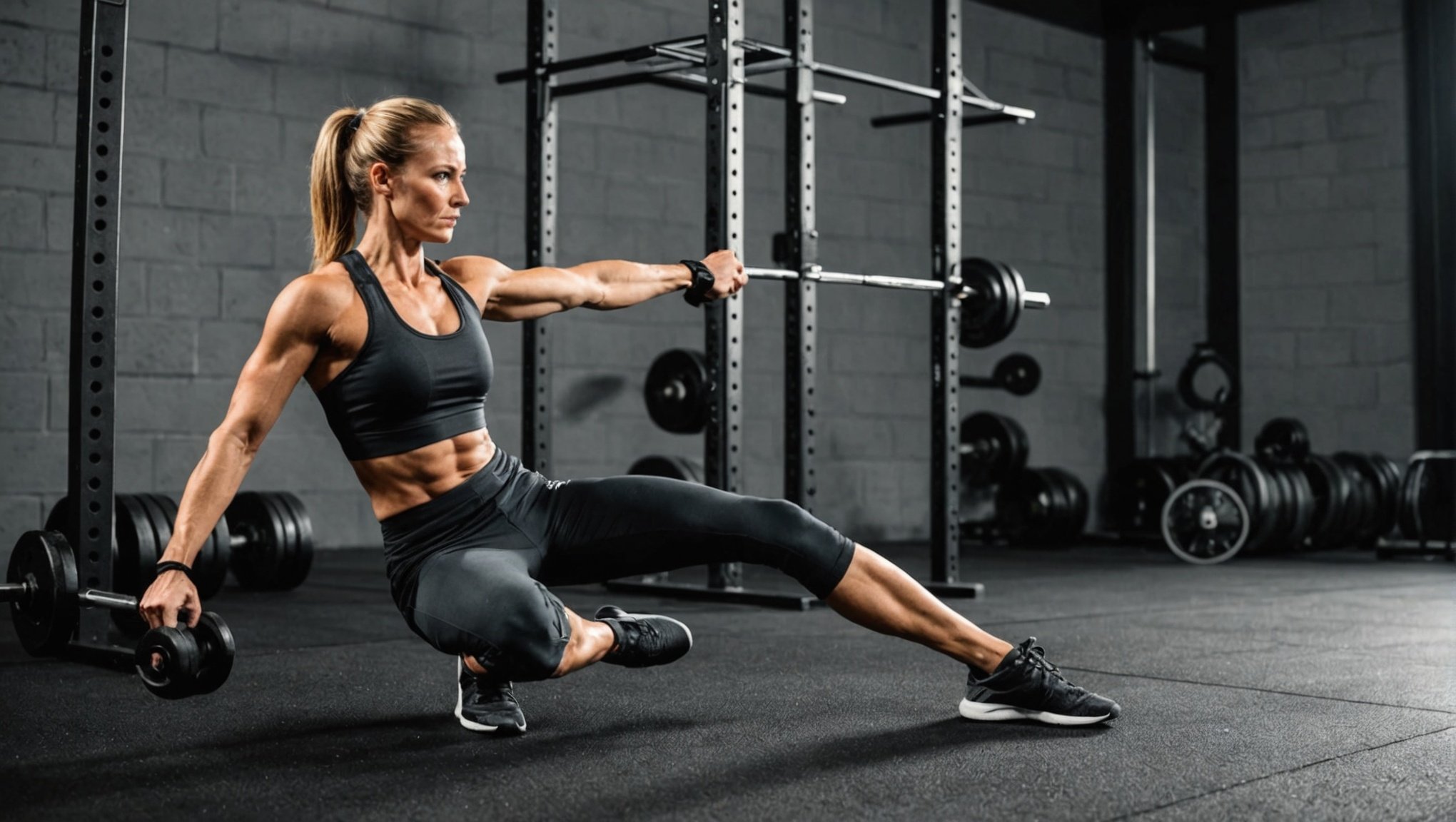In the world of fitness training, a constant debate rages on: Which is superior for functional fitness, multi-joint or single-joint exercises? As you journey through your fitness regimen, it’s essential to understand the impact and benefits of both these types of exercises on your body. In this article, we delve deep into the scholarly studies and research that highlight the advantages and disadvantages of multi-joint and single-joint movements. By understanding the fundamentals of these exercises, you’ll be well-equipped to make informed decisions regarding your training program.
The Science of Single-joint Exercises
Single-joint exercises, also known as isolation exercises, involve only one joint movement. These exercises focus on a specific muscle or muscle group, allowing you to target and isolate certain areas of your body.
Have you seen this : How can the adjustment of sleep patterns optimize muscle recovery?
Consider the bicep curl, a classic single-joint exercise. This exercise solely engages the elbow joint, focusing the resistance on the biceps. Single-joint exercises have been the cornerstone of bodybuilding and sculpting routines for decades.
Through numerous studies, scholars have found that single-joint exercises offer certain benefits. First, isolation exercises allow for targeted muscle growth. If you have a lagging muscle group, single-joint exercises can help bring that muscle up to par. Independent research has also shown that isolation exercises can help with joint mobility and muscle rehabilitation, making them suitable for individuals recovering from an injury.
Topic to read : How can specific wrist strengthening exercises improve your bench press technique?
Moreover, single-joint exercises tend to place less stress on the central nervous system compared to their multi-joint counterparts. This could potentially reduce fatigue and allow for more frequent training sessions. However, it’s essential to note that while single-joint exercises can lead to aesthetic improvements, they may not necessarily translate to better functional fitness.
The Power of Multi-joint Exercises
Multi-joint exercises, otherwise known as compound exercises, involve the movement of two or more joints. These exercises engage multiple muscle groups simultaneously, offering a more comprehensive workout.
Take the bench press, a common multi-joint exercise. This exercise involves the movement of the elbow and shoulder joints, engaging the chest, shoulders, and triceps. In the realm of functional fitness, multi-joint exercises are acclaimed for their efficiency and effectiveness.
Various studies back up the merits of multi-joint exercises. They provide a more efficient workout, allowing you to work multiple muscle groups in a shorter amount of time. This makes them ideal for individuals with limited time to devote to exercise.
Moreover, multi-joint exercises have been shown to produce a higher metabolic response, therefore burning more calories and aiding in weight loss. They also stimulate greater hormonal responses, which can enhance muscle growth and strength gains.
Most importantly, perhaps, is the fact that multi-joint exercises mimic real-world movements. They improve functional fitness by training your muscles to work together, enhancing overall strength and coordination. This makes them particularly beneficial for athletes or individuals who engage in physically demanding activities.
The Balance between Single-joint and Multi-joint Exercises
While it’s clear that both single and multi-joint exercises have their respective merits, the key to a balanced fitness routine lies in incorporating both types of exercises. This ensures a comprehensive workout that targets both individual muscle groups and overall strength and coordination.
Studies suggest that single-joint exercises can serve as a supplement to a training program centered around multi-joint movements. Incorporating isolation exercises can help address muscle imbalances, enhance muscle definition, and aid in injury prevention and rehabilitation.
On the other hand, the functional benefits of multi-joint exercises are hard to ignore. They can help improve overall strength, promote muscle symmetry, and enhance athletic performance.
In Conclusion: A Combination is Key
The ongoing debate between single-joint and multi-joint exercises serves to highlight the benefits of both approaches to training. However, the most effective training programs seem to incorporate a combination of both.
Researchers suggest starting your workouts with multi-joint exercises to take advantage of their functional and strength-building benefits. Following this, you can incorporate single-joint exercises to address specific muscle groups.
This combination allows you to enjoy the benefits of both types of exercises: the targeted muscle growth of single-joint exercises and the functional fitness advantages of multi-joint movements. By understanding the science behind these exercises, you can create a training program that helps you meet your fitness goals effectively.
Remember, fitness is not a one-size-fits-all approach. What matters most is finding a routine that suits your individual needs, goals, and lifestyle. Whether your regimen is dominated by single-joint or multi-joint exercises, what truly counts is consistency in your workouts and commitment to your overall health and well-being.
The Role of Diet and Rest in Enhancing the Benefits of Exercises
While the impact of multi-joint and single-joint exercises on functional fitness cannot be overlooked, it’s important to remember that these workouts are just one part of the fitness equation. Proper nutrition and adequate rest are two other crucial factors that can significantly enhance the benefits of your exercise regimen.
According to various studies available on Google Scholar, eating a balanced diet can help fuel your workouts and boost muscle growth. Consuming adequate protein is particularly important because it aids in muscle repair and growth. This is crucial whether you’re engaging in resistance training, focusing on muscle hypertrophy, or simply trying to maintain your current muscle mass.
Carbohydrates, on the other hand, provide the energy needed to perform both single-joint and multi-joint exercises. Eating enough healthy fats is also beneficial as they support hormone production, which is crucial for muscle growth.
In terms of rest, getting enough sleep and taking time to recover between workouts can significantly enhance your body’s ability to build and repair muscle. This is because most muscle repair and growth occurs during sleep. Moreover, allowing your muscle groups to rest after a high-intensity workout can prevent injuries and promote muscle strength.
So, while the bench press, squats, and bicep curls might take center stage in your workout routine, don’t forget to give your body composition the right dietary support and adequate rest it needs to truly reap the benefits of your fitness efforts.
Making the Most of Your Workout Routine
Implementing a balanced combination of single-joint and multi-joint exercises is key to developing a well-rounded and efficient workout routine. However, it’s also important to keep in mind that everyone’s body responds differently to exercise. What works for one person might not work for another.
To make the most of your workout routine, it’s beneficial to keep track of your progress and adjust your workout plan as needed. This could mean increasing the intensity of your workouts, adding new exercises, or even taking more rest days.
Furthermore, it’s crucial to listen to your body. If a particular exercise causes discomfort or pain, it’s a good idea to modify it or try a different exercise. While pushing your limits can lead to gains in muscle strength and upper body size, it’s equally important to avoid injuries and overtraining.
In conclusion, whether your primary goal is functional fitness, muscle growth, or both, incorporating a combination of single-joint and multi-joint exercises into your routine can help you achieve your fitness goals. Just remember to support your workouts with proper nutrition, adequate rest, and an openness to adjusting your routine as needed.
Conclusion: A Holistic Approach to Fitness
As we’ve explored in this article, both single-joint and multi-joint exercises offer unique benefits and play a crucial role in improving functional fitness. Whether you’re isolating specific muscle groups with isolation exercises or engaging multiple muscles with compound exercises, the key to a successful fitness regimen is balance.
However, remember that exercise is just one component of fitness. A balanced diet and adequate rest are equally important in supporting muscle growth, enhancing performance, and promoting overall well-being.
Ultimately, the best fitness regimen is one that suits your unique needs, goals, and lifestyle. Whether it’s a bench press or bicep curl, what truly counts isn’t the specific exercise you’re doing, but the consistency and commitment with which you pursue your fitness journey. By adopting a holistic approach to fitness, you can ensure that you’re not just working out smarter, but also living a healthier, more balanced life.






